|
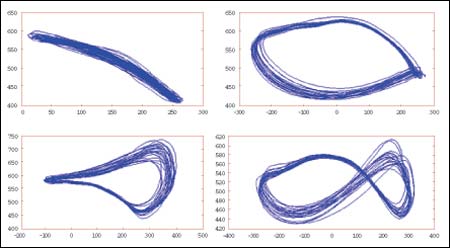
This is the supporting graphic for the article below:
"BIOMECHANICS OF WHEELCHAIR PROPULSION PATTERNS".
|
|
| |
 |

 |
 |
| Oak Tree PT Newsletter |
 |
Volume 2, #1
January
2004 |
 |
 |
 |
 |
 |
 |
 |
 |
 |
 |
Greetings,
The Oak Tree PT Newsletter presents information that is in some way related to physical therapy and health- related issues. We hope that
you find it interesting, informative, topical, and timely.
We would like your feedback on any of the topics presented here, and on any topics that you would like to see addressed
in the future. Please feel free to send in questions that are relevant to our focus, and we will try to answer as many as
we can in our "Readers' Forum"
SOME
OF YOU MAY BE WONDERING WHY YOU DID NOT RECEIVE THE DECEMBER 2003 ISSUE, WHICH WAS A HOLIDAY SUPPLEMENT ONLY. THAT ISSUE GOT
TAGGED AS "SPAM" BY SOME OF YOUR MAIL PROGRAMS, BECAUSE IT CONTAINED A CATALOGUE OF HEALTH & FITNESS PRODUCTS FROM OUR
WEBSITE. ALTHOUGH THAT SUPPLEMENT APPEARS ONLY ONCE A YEAR, WE APOLOGIZE IF ANY OF YOU FELT THAT THE ADVERTISING WAS UNINVITED.
PLEASE DO NOT HESITATE TO E-MAIL US WITH ANY COMMENTS THAT YOU MAY HAVE.
WE AT OAK TREE PT WISH ALL OF YOU A HAPPY,
HEALTHY, AND PROSPEROUS NEW YEAR FILLED WITH PEACE.
| T'AI CHI DETAILED
COURSE DESCRIPTION |
 |
 Improving Balance and Decreasing
Fall Risk Using T'ai Chi Improving Balance and Decreasing
Fall Risk Using T'ai Chi
A groundbreaking one-day seminar for Therapists and other Professionals
working with patients who are at risk for falls
According to the most recent statistics from the Center for Disease
Control (CDC), falls are the primary reason for accidental deaths, the 5th leading cause of death for Americans age 65 and
older. In that age group, 30 percent of community dwelling elders and 50 percent of nursing home residents fall each year.
The research literature supports T'ai Chi as the best balance exercise for elderly people at risk for falls. This interactive
seminar will provide you with all the tools and skills you will need to begin a T'ai Chi balance program as soon as you return
to the clinic. You will also learn creative techniques for engaging patients who are withdrawn and reluctant to participate
in other forms of therapy. After practicing each exercise during this one-day seminar, you will leave with a clear understanding
of how to progress your patients through the sequence of T'ai Chi exercises toward higher function with decreased fall risk.
Finally, you will learn how to include T'ai Chi in the multidisciplinary Care Plan, and how to document the therapy sessions
for maximum reimbursement from Medicare Parts A and B and all other types of insurance plans. This course is designed to be
participatory and fun, and after initiating the program in your own clinical setting, you will be pleasantly surprised to
find your patients looking forward to their next T'ai Chi session with you.
What You Will Learn
·
Understand how Eastern and Western approaches to balance differ
· Learn postural corrections that have an immediate effect
on balance
· Use kinesthetic imagery to improve cognitive, emotional and physical function
· Demonstrate movement strategies
that maintain balance control
· Practice T'ai Chi exercises in sitting and standing that strengthen lower extremity and
postural control muscles, increase range of motion and improve balance
· The three common mistakes in stance that decrease
balance and reaction times
· Reprogramming neuromuscular responses using kinesthetic imagery
· The tan tien: The key
to controlled and centered movement
· Tailoring the T'ai Chi exercise progressions to individual patient needs
· Incorporating
T'ai Chi in the Care Plan and documentation for reimbursement
Who Should Attend
· Physical Therapists
·
Occupational Therapists
· Recreation Therapists
· Nurses
· Restorative Team members
· Physicians
· Clinical
Managers
· Educators
· Administrators
· Athletic Trainers
· Anyone involved in the care of someone who has issues
with decreased balance
About the Speaker
Jon Ruttenberg holds a Masters Degree in Physical Therapy
from Boston University, and he is a Certified Ergonomic Assessment Specialist. He has trained patients in T'ai Chi principles
while working as a Physical Therapist in a variety of settings, including nursing homes, retirement communities, hospitals,
sports medicine clinics, outpatient clinics and occupational medicine. Mr. Ruttenberg has taught therapists and other health
care professionals how to design T'ai Chi balance programs in seminars sponsored by various health care facilities and by
ADVANCE Magazine. He is the owner of Oak Tree PT, which is a private practice specializing in orthopedics, balance and ergonomic
assessment and consulting for various industries. Mr. Ruttenberg is a speaker with experience, energy and enthusiasm for one
of the most practical and exciting seminars you will attend this year.
|
| BIOMECHANICS OF
WHEELCHAIR PROPULSION PATTERNS |
 |
 Manual wheelchair users are at high risk for sustaining painful musculoskeletal injuries (MSI) at the shoulder and
wrist due to repetitive stress and strain. Special attention must be paid to the upper extremity joint angles, especially
at or near the points of contact between the hands and the pushrims. According to Alicia Koontz, PhD, ATP, and Michael Boninger,
MD, writing in Rehab Management, "individuals who apply greater forces and more rapidly load the pushrims at higher stroke frequencies" are more likely to
develop median nerve injury resulting in Carpal Tunnel Syndrome (CTS). Also, those "who push with a greater number of strokes
for a given speed" also increase the likelihood of developing CTS. Manual wheelchair users are at high risk for sustaining painful musculoskeletal injuries (MSI) at the shoulder and
wrist due to repetitive stress and strain. Special attention must be paid to the upper extremity joint angles, especially
at or near the points of contact between the hands and the pushrims. According to Alicia Koontz, PhD, ATP, and Michael Boninger,
MD, writing in Rehab Management, "individuals who apply greater forces and more rapidly load the pushrims at higher stroke frequencies" are more likely to
develop median nerve injury resulting in Carpal Tunnel Syndrome (CTS). Also, those "who push with a greater number of strokes
for a given speed" also increase the likelihood of developing CTS.
Koontz and Boninger propose that changing both the technique used when pushing the wheelchair and the configuration of
the wheelchair itself could lead to reduced propulsive forces and lower stroke frequency, thereby lowering the risk of MSI.
TECHNIQUE
The
authors of this article identify four distinct patterns used during the propulsion cycle (See figure above). The patterns
are defined by, "hand motion during the recovery phase of propulsion--the time when the hand is off the rim and preparing
for the next stroke".
1) Semicircular (SC): The hands fall below the pushrim during the recovery phase.
2)
Single-looping-overpropulsion (SLOP): The hands rise above the pushrim during the recovery phase.
3) Double-looping-overpropulsion
(DLOP): Begins with the hands rising above the pushrim, then crossing over and dropping under the pushrim during the recovery
phase.
4) Arcing (ARC): The hands follow an arc along the path of the pushrim during the recovery phase.
According
to the authors, "The semicircular pattern has been associated with lower stroke frequency, greater time spent in the push
phase relative to the recovery phase, less angular joint velocity and acceleration, and increased efficiency." They note that,
"The semicircular pattern makes sense in that the hand follows an elliptical pattern with no abrupt changes in direction and
extra hand movements. It is the same pattern used by wheelchair racers."
WHEELCHAIR CONFIGURATION
Koontz and Boninger cite several studies in addition to their own that support lowering
the seat position to a height that allows for 100 to 120 degrees of elbow flexion. They also recommend moving the seat as
far rearward as possible without compromising wheelchair stability. They list the following benefits of these changes:
*
Less muscle effort
* Joints move more smoothly (less joint acceleration)
*Greater push and recovery times
*
Lower stroke frequencies
* Fewer strokes to get to a targeted speed
* Greater hand contact angles enable more
of the pushrim to be utilized. This leads to a decrease in the stroke frequency required to reach a desired speed, and lower
forces and rate of loading on the joints and on the median nerve.
As an aside, Rodgers, et al., publishing in the Journal of Rehabilitation Research and Development, found that while flexing the trunk during wheelchair propulsion does not increase VO2, it "may, in fact, lead to painful
upper limb injury which limits physical performance and quality of life." They attribute this increased risk to "kinematics,
kinetics, muscle activation patterns, and propulsion temporal characteristics". However, they do not address the fact that
this is also the style favored by wheelchair racers. They sampled only non-athletes in this study, and they recommend "strength
and endurance training of the muscles critical to propulsion", because they found that the non-athletes in their study who
use the "trunk flexion style . . . appear to be compensating for peripheral muscle fatigue." Further study on wheelchair athletes
certainly seems to be in order.
Please see the short, related "Quick-Take" below in this newsletter on the new mechanical
elliptical wheelchair propulsion systems.
See also this technical note . . . »
|
| HEALTH & FITNESS
QUICK-TAKES |
 |
 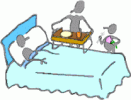 Researchers report in Chest that bed-bound patients with marked muscle atrophy, who received Electrical Stimulation in addition to Active Range of Motion
exercises significantly improved muscle strength and decreased the number of days needed to transfer from bed to chair. Researchers report in Chest that bed-bound patients with marked muscle atrophy, who received Electrical Stimulation in addition to Active Range of Motion
exercises significantly improved muscle strength and decreased the number of days needed to transfer from bed to chair.
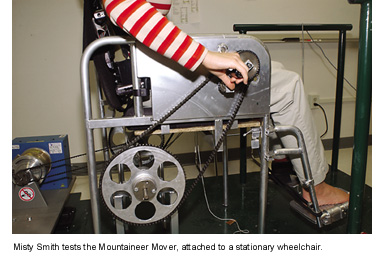 According to abstracts that will be presented at the APTA Combined Sections Meeting 2004 in Nashville, 13 of 14 able-bodied
subjects preferred a wheelchair with a new elliptical propulsion system over the standard wheelchairs in use today. The subjects
rated the new propulsion system higher for comfort, and the investigators feel that the elliptical system "shows promise for
reducing energy expenditure for wheelchair propulsion." According to abstracts that will be presented at the APTA Combined Sections Meeting 2004 in Nashville, 13 of 14 able-bodied
subjects preferred a wheelchair with a new elliptical propulsion system over the standard wheelchairs in use today. The subjects
rated the new propulsion system higher for comfort, and the investigators feel that the elliptical system "shows promise for
reducing energy expenditure for wheelchair propulsion."
 In an October 23rd New England Journal of Medicine article, researchers reported that the presence of high levels of an enzyme known as MPO is directly linked to increased
arterial inflammation, and can reliably predict the occurence of a "cardiac event" within the next six months. This enzyme
can be detected with a simple blood test. In an October 23rd New England Journal of Medicine article, researchers reported that the presence of high levels of an enzyme known as MPO is directly linked to increased
arterial inflammation, and can reliably predict the occurence of a "cardiac event" within the next six months. This enzyme
can be detected with a simple blood test.
 Boston University scientists studied 3,507 Chinese 60-year-olds who were all life-long chopsticks users. They found
a significant increase in the incidence of arthritis in the hand that used the chopsticks. The joints Boston University scientists studied 3,507 Chinese 60-year-olds who were all life-long chopsticks users. They found
a significant increase in the incidence of arthritis in the hand that used the chopsticks. The joints  in the fingers most stressed by chopstick use--the thumb and the second and third fingers--displayed the most damage. Using
this information, the researchers may try "to design more ergonomically friendly chopsticks". They reassure Western diners
that occasional social use poses virtually no risk. in the fingers most stressed by chopstick use--the thumb and the second and third fingers--displayed the most damage. Using
this information, the researchers may try "to design more ergonomically friendly chopsticks". They reassure Western diners
that occasional social use poses virtually no risk.
Abstract: Chopstick Arthropathy. The Beijing Osteoarthritis (OA) Study
National Institute of Arthritis and Musculoskeletal and Skin Diseases. 2002. Handout on Health: Osteoarthritis (What is
Osteoarthritis?)
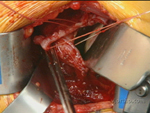 A recent study published in the Journal of Bone and Joint Surgery (American), Chronic Rotator Cuff Injury and Repair Model in Sheep, found that "earlier repair of the tendon results in more rapid recovery of both muscle function and tendon elasticity compared
with a more delayed repair", and that "there may be a 'point of no return' in rotator cuff injury after which the elasticity
of the muscle-tendon unit does not return to normal." A recent study published in the Journal of Bone and Joint Surgery (American), Chronic Rotator Cuff Injury and Repair Model in Sheep, found that "earlier repair of the tendon results in more rapid recovery of both muscle function and tendon elasticity compared
with a more delayed repair", and that "there may be a 'point of no return' in rotator cuff injury after which the elasticity
of the muscle-tendon unit does not return to normal."
 According to the Washington Post on Sunday November 16, 2003, American businesses are cashing in on the U.S.
obesity epidemic. Among the products offered in response to the problem: scales and stretchers with higher maximum weights,
and oversize models of coffins. According to the Washington Post on Sunday November 16, 2003, American businesses are cashing in on the U.S.
obesity epidemic. Among the products offered in response to the problem: scales and stretchers with higher maximum weights,
and oversize models of coffins.
American Obesity Association
The Surgeon General's Call To Action To Prevent and Decrease Overweight and Obesity
CDC Report On Obesity
This is the now the height of cold and flu season. Immunologists at Harvard University discovered that
people who drank five cups of black tea a day for 2 weeks transformed their immune system T cells into "Hulk cells" that pumped
out 10 times more cold and flu virus-fighting interferon than those of the non-tea drinkers.  The researchers postulate that drinking large amounts of black tea may help ward off any conditions that the body fights with
interferon, including infected cuts, athlete's foot, and a host of diseases. The researchers postulate that drinking large amounts of black tea may help ward off any conditions that the body fights with
interferon, including infected cuts, athlete's foot, and a host of diseases.
SOURCES: Jack F. Bukowski, M.D., Ph.D.,
assistant professor, medicine, Harvard Medical School, and staff rheumatologist, Brigham and Women's Hospital, Boston; Joseph
Simrany, president, Tea Council of the USA, New York City; Hasan Mukhtar, Ph.D., Helfaer Professor of Cancer Research and
director and vice chairman, research, Department of Dermatology, University of Wisconsin, Madison; Sept. 8, 2003, presentations,
American Chemical Society national meeting, New York City
Health On the Net Foundation article: Does Tea Belong in the Medicine Chest?
NIH Publication: Is It a Cold or the Flu?
CDC: Colds and the Flu: What to Do If You Get Sick
 In an effort to reduce high blood pressure among African-American men, researchers at the University of Texas Southwestern
Medical Center at Dallas are training Dallas barbers to record customers' blood pressure using automated devices. When they
identify customers with untreated hypertension, they make the appropriate medical referrals. Black males represent the group
with the highest rate of uncontrolled hypertension in the U.S. The program takes advantage of "the remarkable long-term patronage
and high frequency of haircut visits", according to the principle investigator in the study. In an effort to reduce high blood pressure among African-American men, researchers at the University of Texas Southwestern
Medical Center at Dallas are training Dallas barbers to record customers' blood pressure using automated devices. When they
identify customers with untreated hypertension, they make the appropriate medical referrals. Black males represent the group
with the highest rate of uncontrolled hypertension in the U.S. The program takes advantage of "the remarkable long-term patronage
and high frequency of haircut visits", according to the principle investigator in the study.
See Full Article
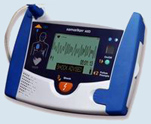 43 New Mexicans who are considered at moderate risk for a heart attack have been given automated external defibrillators
to keep in their homes, and their families have been trained in their use. A study of cardiac arrest survival rates shows
that the equipment is important in saving lives. That is why many of the devices have been installed in public places such
as airports and health clubs. But according to a researcher involved in the New Mexican study, "About 70 percent of cardiac
arrests seem to occur at home". If the study shows increased survival rates among the group given the defibrillators, health
insurance may begin to cover the cost of these expensive devices when a doctor writes a prescription for one. 43 New Mexicans who are considered at moderate risk for a heart attack have been given automated external defibrillators
to keep in their homes, and their families have been trained in their use. A study of cardiac arrest survival rates shows
that the equipment is important in saving lives. That is why many of the devices have been installed in public places such
as airports and health clubs. But according to a researcher involved in the New Mexican study, "About 70 percent of cardiac
arrests seem to occur at home". If the study shows increased survival rates among the group given the defibrillators, health
insurance may begin to cover the cost of these expensive devices when a doctor writes a prescription for one.
See Full Article
 A 1996 Norwegian study published in the European Journal of Clinical Nutrition (October) suggests that people with musculoskeletal pain experience less pain if they take cod liver oil. A 1996 Norwegian study published in the European Journal of Clinical Nutrition (October) suggests that people with musculoskeletal pain experience less pain if they take cod liver oil.
 As of January 1 of this year, American families may contribute up to 100 percent of their normal health insurance policy
deductible, or $4,500 in pretax dollars annually into a tax-free medical savings account. Single individuals may contribute up to $1,000 annually. This plan is a provision of the Medicare reform legislation signed
by President Bush in December. Any unused funds stay in the account and accrue tax-free interest. As of January 1 of this year, American families may contribute up to 100 percent of their normal health insurance policy
deductible, or $4,500 in pretax dollars annually into a tax-free medical savings account. Single individuals may contribute up to $1,000 annually. This plan is a provision of the Medicare reform legislation signed
by President Bush in December. Any unused funds stay in the account and accrue tax-free interest.
|
|
| Featured Article |
 |
HAPPY NEW YEAR
from
Oak Tree PT |
JOIN OAK TREE PT's JON RUTTENBERG
IN FULL- DAY SEMINARS LEARNING:
IMPROVING
BALANCE AND DECREASING FALL RISK USING T'AI CHI: Techniques Yielding Dramatic Results--A Day of Participation and Movement
SEMINAR
DATES:
Cross Country Seminars:
crosscountryuniversity.comSeminar Division 1645 Murfreesboro Road, Suite J Nashville, TN 37217 Phone #: (800) 397-0180 customerservice@ccuseminars.com February 24, 2004: Manchester, NHFour Points Hotel by Sheraton 55 John E. Devine Dr. Manchester,
NH (603) 668-6110 February 25, 2004: Burlington, MAFour Points Barcelo Hotel 30 Wheeler Rd. Burlington,
MA (781) 272-8800 February 26, 2004: Providence, RIBristol Harbor Inn 259 Thames St. Bristol, RI (401)
254-1444 COST:Single: $169.00 2 to 4: $149.00 5 or more: $129.00 TIME:8:00
AM to 3:30 PM Approvals for this Course:Cross Country University is a Preferred Provider of professional
continuing education with the National Association of Boards of Examiners of Long Term Care Administrators (NAB) and has approved
this program for the number of clock hours listed under their sponsor agreement with NAB/NCERS. This program is approved for
6 continuing education clock hours Approval #2422004-17191-6. State licensure boards, however, have final authority on the
acceptance of individual courses. 7.2 contact hours for nurses are awarded. Cross Country University, the Education and Training
Division of Cross Country Inc., is accredited as a provider of continuing education nursing education by the American Nurses
Credentialing Center's Commission on Accreditation. Cross Country University is approved by the California Board of Registered
Nursing, Provider #CEP 13345, for 7.2 contact hours. Cross Country University is an approved provider with the Iowa Board
Of Nursing, approved provider #328. This course is offered for 7.2 contact hours. Cross Country University Provider #P3097
is recognized by the NATA Board of Certification, Inc. to offer continuing education for certified athletic trainers. This
course is offered for 6 CEUs.
Care Resources, Inc.
Continuing Education Department 1026 Cromwell Bridge Road Baltimore, MD 21286-3308 (410) 583-2490
phone(888) 613-2275 toll-free(410) 583-9670 faxcontinuinged@careresources.netMarch 25, 2004: Baltimore, MD 8:30 am--4:30 pm $145; $155 Late Registration (Late fee applies for registrations
received at Care 21 days or less before the course)
.6 CEUs, 6 contact hours
Save 20% on fitness and therapy products by logging on to
www. therapyzone.com
and using Oak Tree PT's discount code: 10877.
$1.00 of every order from TherapyZone is donated to the "TherapyZone Foundation for Children's Fitness". The Foundation
provides fitness products and education to underserved preschools around the U.S. If you know of a non-profit day care or
childcare program that may qualify, please contact us at
Oak Tree PT.
The TherapyZone founders were the motivators behind the recently published Guidelines for Early Childhood Movement called
"Active Start" by the National Association of Sport and Physical Education (NASPE). The Guidelines state all children ages
3-5 require 1 hour of structured movement or exercise every day to fully develop their strength, balance, coordination, and
endurance. These activities can include walking and other types of structured play utilizing their muscles in repetitive patterns
in a fun, non-competitive manner. For more information on the Foundation, link to their website from
TherapyZone's home page.
THE FOLLOWING LOGOS ARE LINKS TO THOSE SITES:

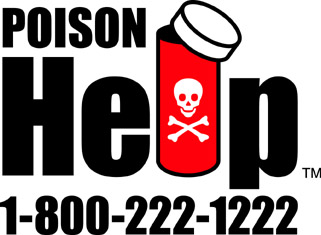







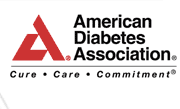

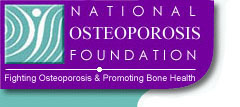

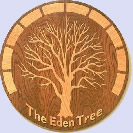

|
|
 |
email: pt@oaktreept.com
voice: (410) 218-4172
web: http://www.oaktreept.com
|
 |
 | |
| |
 |
 |
|

